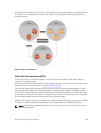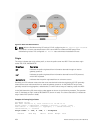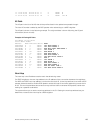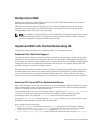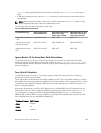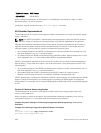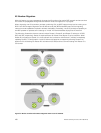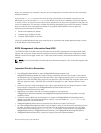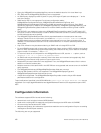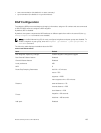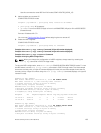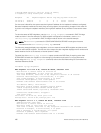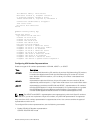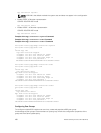
When you complete your migration, and you have reconfigured your network with the new information,
disable this feature.
If you use the no prepend option, the Local-AS does not prepend to the updates received from the
eBGP peer. If you do not select no prepend (the default), the Local-AS is added to the first AS segment
in the AS-PATH. If an inbound route-map is used to prepend the as-path to the update from the peer, the
Local-AS is added first. For example, consider the topology described in the previous illustration. If Router
B has an inbound route-map applied on Router C to prepend "65001 65002" to the as-path, the
following events take place on Router B:
1. Receive and validate the update.
2. Prepend local-as 200 to as-path.
3. Prepend "65001 65002" to as-path.
Local-AS is prepended before the route-map to give an impression that update passed through a router
in AS 200 before it reached Router B.
BGP4 Management Information Base (MIB)
The FORCE10-BGP4-V2-MIB enhances Dell Networking OS BGP management information base (MIB)
support with many new simple network management protocol (SNMP) objects and notifications (traps)
defined in
draft-ietf-idr-bgp4-mibv2-05. To see these enhancements, download the MIB from the Dell
website.
NOTE: For the Force10-BGP4-V2-MIB and other MIB documentation, refer to the Dell iSupport web
page.
Important Points to Remember
• The f10BgpM2AsPathTableEntry table, f10BgpM2AsPathSegmentIndex, and
f10BgpM2AsPathElementIndex are used to retrieve a particular ASN from the AS path. These indices
are assigned to the AS segments and individual ASN in each segment starting from 0. For example, an
AS path list of {200 300 400} 500 consists of two segments: {200 300 400} with segment index 0 and
500 with segment index 1. ASN 200, 300, and 400 are assigned 0, 1, and 2 element indices in that
order.
• Unknown optional transitive attributes within a given path attribute (PA) are assigned indices in order.
These indices correspond to the f10BgpM2PathAttrUnknownIndex field in the
f10BgpM2PathAttrUnknownEntry table.
• Negotiation of multiple instances of the same capability is not supported.
F10BgpM2PeerCapAnnouncedIndex and f10BgpM2PeerCapReceivedIndex are ignored in the peer
capability lookup.
• Configure inbound BGP soft-reconfiguration on a peer for f10BgpM2PrefixInPrefixesRejected to
display the number of prefixes filtered due to a policy. If you do enable BGP soft-reconfig, the
denied prefixes are not accounted for.
• F10BgpM2AdjRibsOutRoute stores the pointer to the NLRI in the peer's Adj-Rib-Out.
• PA Index (f10BgpM2PathAttrIndex field in various tables) is used to retrieve specific attributes from the
PA table. The Next-Hop, RR Cluster-list, and Originator ID attributes are not stored in the PA Table
and cannot be retrieved using the index passed in command. These fields are not populated in
f10BgpM2PathAttrEntry, f10BgpM2PathAttrClusterEntry, and f10BgpM2PathAttrOriginatorIdEntry.
• F10BgpM2PathAttrUnknownEntry contains the optional-transitive attribute details.
Border Gateway Protocol IPv4 (BGPv4)
191



